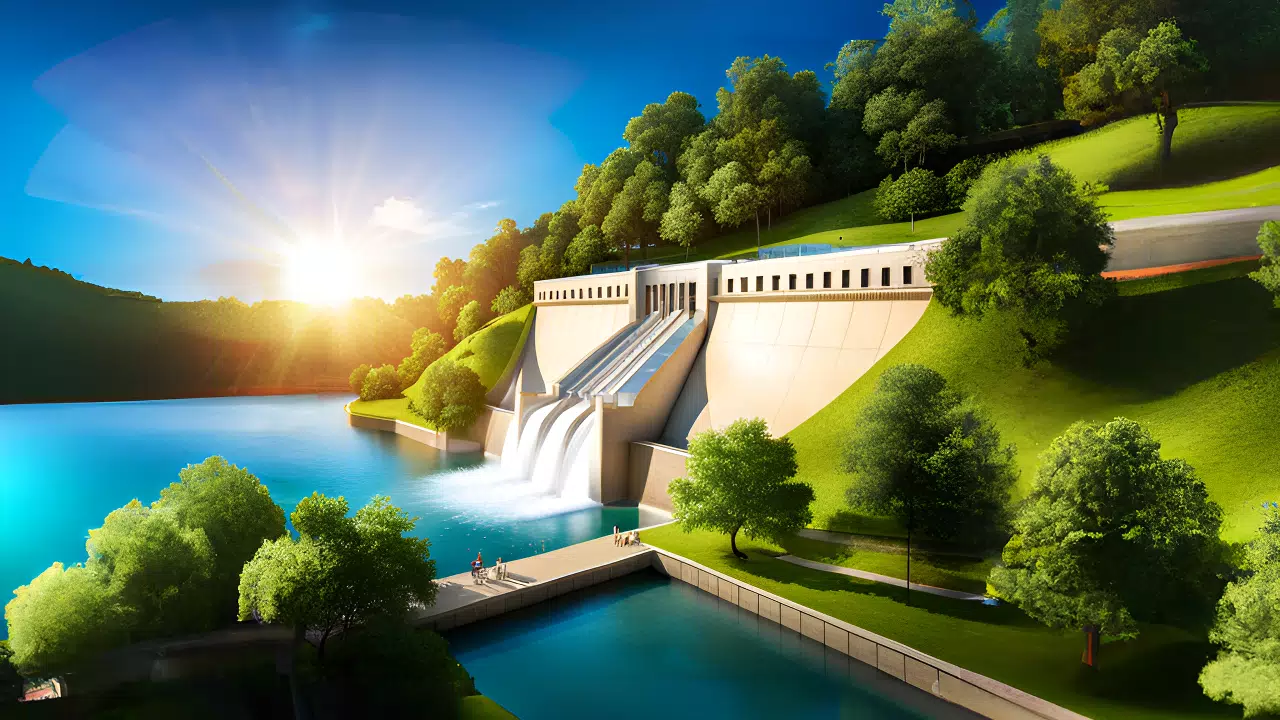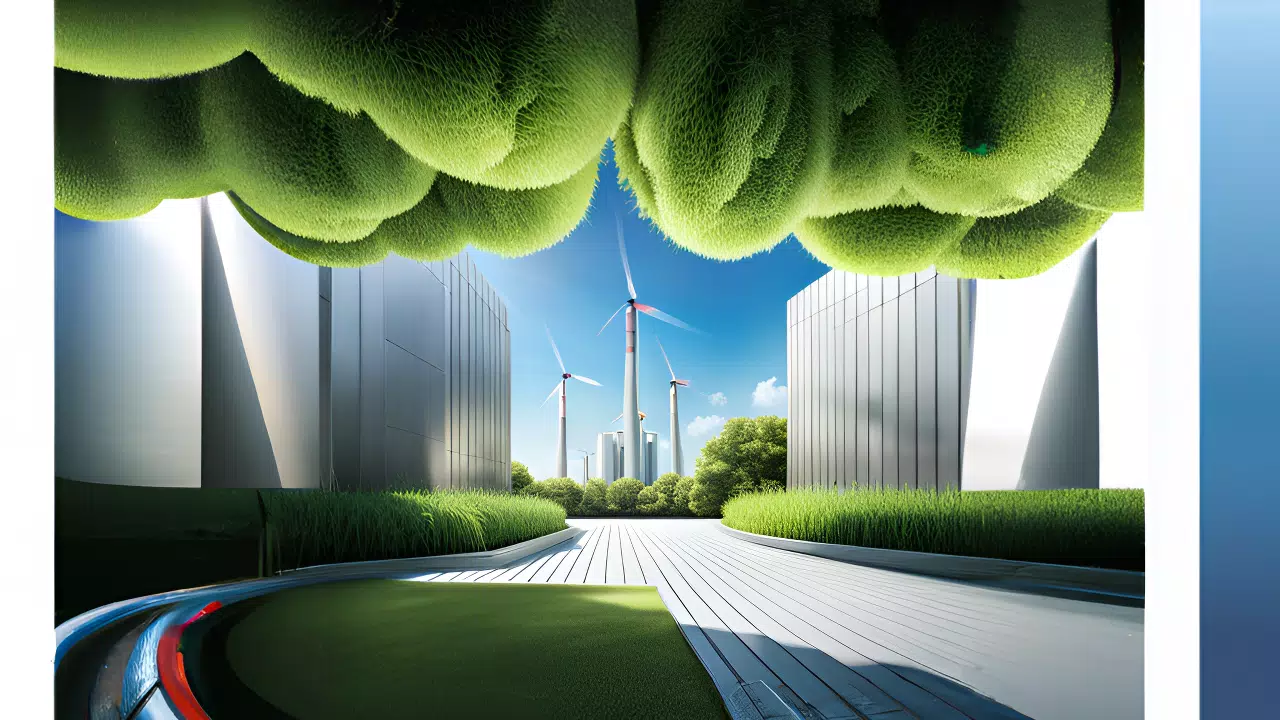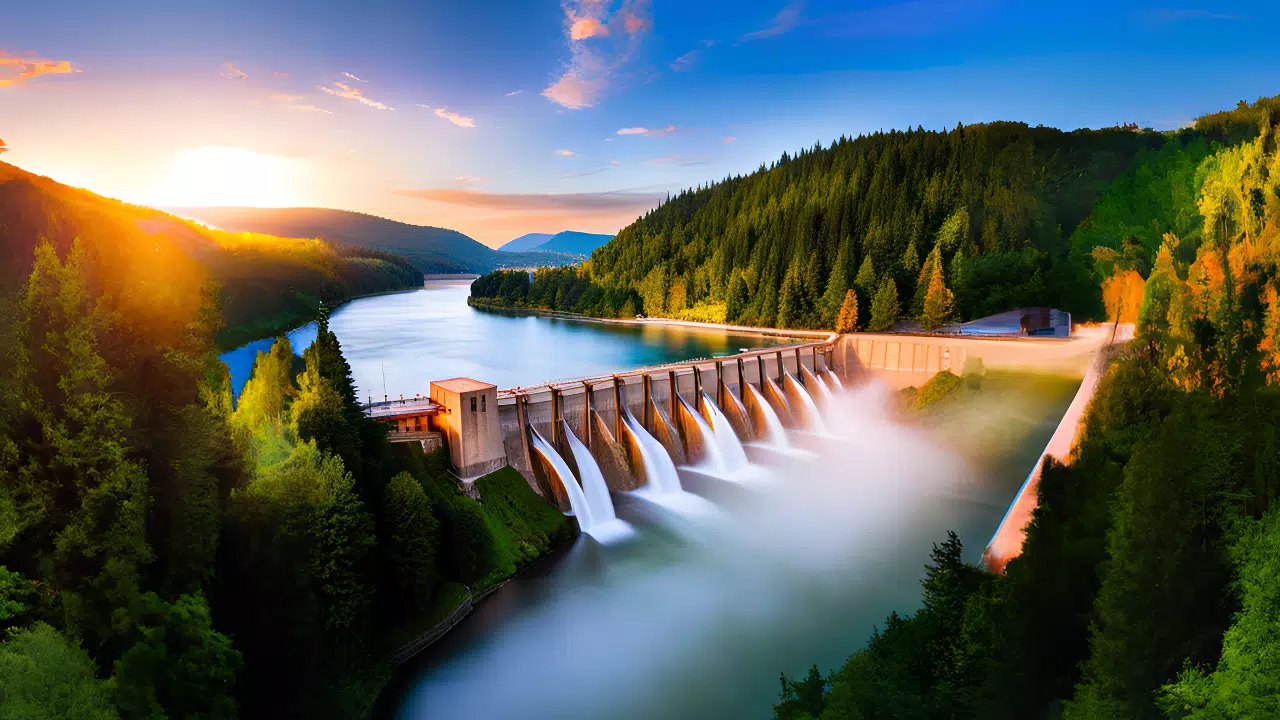
Hidroelectrica and Masdar team up to drive Renewable Energy in Romania
Romania's hydropower group, Hidroelectrica, has formed a partnership with Abu Dhabi Future Energy Company (Masdar) to shape the renewable energy landscape in Romania. The partnership aims to invest, build, operate, and develop renewable energy projects nationwide.
Who are Hidroelectrica and Masdar?
Hidroelectrica is a leading Romanian hydropower group that operates 209 hydro plants on 38 rivers in Romania. According to Global Energy Observatory, Hidroelectrica is the largest hydropower producer in Romania, with a total installed capacity of approximately 6.5 GW. On the other hand, Masdar is controlled by the Emirates sovereign wealth fund, Mubadala. Masdar's vision is to be a leading renewable energy company that delivers sustainable solutions for future generations. Mubadala has invested over USD 20 billion in renewable energy capacities worldwide.
The Partnership
The collaboration between Hidroelectrica and Masdar will have a significant impact on Romania's renewable energy sector. The partnership aims to develop renewable energy projects that will enhance the country's renewable energy capacity by harnessing the power of wind, solar, and hydroelectric power. The partnership was first hinted at in the autumn of 2020 when the Romanian Energy Minister attended an event in the area.
Focus on Wind Power, Solar Power, and Hydroelectric Power
This joint venture aims to focus on developing projects in wind power, solar power, and hydroelectric power. Romania has a rich hydropower resource base and has significant potential for wind and solar energy generation. According to the Energy Policy Group, Romania's wind energy capacity was 3.16 GW, and its solar capacity was 1.38 GW in 2020. Romania has set a target of generating 30.7% of its electricity from renewable sources by 2030, and this partnership will help the country achieve this goal.
Impact on the Renewable Energy Sector
The partnership between Hidroelectrica and Masdar will positively impact Romania's renewable energy sector. The joint venture will attract investment in renewable energy, create new growth opportunities, and establish Romania as a hub for renewable energy in Europe. Additionally, the initiative will aid Romania in reducing its dependence on fossil fuels and encourage the adoption of green energy. According to Renewable Energy Magazine, this collaboration marks a significant step in Romania's transition to a low-carbon economy.
Conclusion
In conclusion, Hidroelectrica's partnership with Masdar is a crucial step for Romania in reaching its renewable energy goals. With a focus on wind, solar, and hydropower, this initiative will have a positive impact on Romania's renewable energy sector. Through foreign investment, the creation of energy hubs, and the promotion of green energy practices, this partnership will help position Romania as a leader in renewable energy in Europe.

Greek PPC's Acquisition of Enel's Assets and Green Projects in Romania
Greek Public Power Corporation (PPC) has recently acquired a 5.4 GW portfolio of green projects in Romania, along with Enel's assets in the country. This acquisition is a significant step for PPC as it seeks to expand its renewable energy portfolio and reduce its carbon footprint.
PPC is a major Greek energy company
PPC is Greece's largest electricity generation, distribution, and supply company. It is a publicly traded company and a major player in the Greek energy market. The acquisition of the green projects in Romania is part of PPC's strategy to expand its renewable energy portfolio and reduce its carbon footprint.
The deal includes 2.9 GW of wind power, 1.1 GW of solar power, and 1.4 GW of hydroelectric power
The deal involves the acquisition of 2.9 GW of wind power, 1.1 GW of solar power, and 1.4 GW of hydroelectric power. With these assets, PPC can generate a significant amount of renewable energy. The acquisition will also enable PPC to diversify its sources of electricity and become less dependent on fossil fuels.
This acquisition will strengthen PPC's presence in the Romanian market and contribute to its renewable energy goals.
The acquisition will strengthen PPC's presence in the Romanian market, where it has already established itself as a key player in the energy sector. With the addition of Enel's assets and green projects, PPC will be able to contribute significantly to Romania's renewable energy goals, which include generating 30% of its electricity from renewable sources by 2030.
Enel is an Italian multinational energy corporation with assets in various countries, including Romania.
Enel is an Italian multinational energy corporation with operations in over 30 countries worldwide. In Romania, Enel has been active in the power generation sector for over a decade and has made significant contributions to the country's renewable energy goals. Through the acquisition by PPC, Enel can shift its focus to other markets while continuing to support the growth of Romania's renewable energy sector.
The green projects acquired by PPC will help diversify the country's energy sources and promote sustainable development
The green projects acquired by PPC will help diversify Romania's sources of energy, which is currently heavily dependent on fossil fuel sources. The addition of these renewable energy sources will create a more sustainable and diversified energy mix in Romania. Furthermore, the development of these projects will create jobs and promote sustainable development in the country.
This acquisition aligns with PPC's strategy to expand its renewable energy portfolio.
PPC has been actively seeking to expand its renewable energy portfolio in recent years. With this acquisition, it will be able to achieve its goal of increasing its share of renewables in its electricity generation mix. This acquisition will also help the company reduce its carbon footprint and align with global efforts to combat climate change.
The deal will contribute to Romania's efforts in meeting its European Union climate and energy targets
Romania, a European Union member, has established ambitious goals to reduce its carbon footprint and increase the adoption of renewable energy sources. PPC's acquisition is a positive move toward attaining these objectives since it will substantially boost Romania's renewable energy production capacity. By meeting these targets, Romania is contributing to the fight against climate change and the advancement of sustainable development.
In conclusion, Greek Public Power Corporation's acquisition of Enel's assets and green projects in Romania is a significant step towards expanding its renewable energy portfolio and reducing its carbon footprint. With this acquisition, PPC will strengthen its presence in the Romanian market, contribute significantly to Romania's renewable energy goals, diversify the country's sources of energy, promote sustainable development, and align with global efforts to combat climate change.

The Importance of Hydroelectric Power in Romania
Hydroelectric power plays a crucial role in Romania's energy mix, providing a clean and sustainable source of electricity. As the country moves towards a more eco-friendly future, understanding the significance of hydroelectric power becomes increasingly important.
Hydroelectric power in Romania
Hydroelectric power is a renewable energy source that harnesses the power of flowing water to generate electricity. Romania has abundant water resources, making it well-suited for hydroelectric power generation. According to Renewables Now, Romania is Europe's hydro power giant, second only to Norway. The country has numerous hydroelectric power plants, including large-scale facilities and smaller run-of-the-river plants.
Importance of Hydroelectric Power
Hydroelectric power is a significant contributor to Romania's electricity production. Data from The Romanian Energy Center shows that in 2020, hydroelectric power accounted for 26% of the country's electricity generation, making it the second-largest source after coal. Investing in hydroelectric infrastructure can help Romania reduce its dependence on fossil fuels and lower greenhouse gas emissions. The development of hydroelectric projects creates jobs and stimulates economic growth in local communities.
Future Prospects for Hydroelectric Power
Continued investment in hydroelectric power will support Romania's commitment to achieving its renewable energy targets. According to the Romanian National Energy and Climate Plan, the country aims to achieve a 30.7% share of renewable energy sources in gross final consumption by 2030. Hydroelectric power is expected to play a significant role in achieving this target.
Furthermore, according to Business Review, the potential for hydroelectric power in Romania is not yet fully realized, with many untapped resources available for development. The development of new hydroelectric plants can enhance energy security, promote economic growth, and create new job opportunities.
In conclusion, hydroelectric power is a vital part of Romania's energy mix, providing a sustainable source of electricity generation. With abundant water resources, the potential for further development, and government commitments to achieving renewable energy targets, hydroelectric power is well-positioned to remain a significant contributor to Romania's energy landscape.

Challenges and Opportunities in Romania's Hydroelectric Sector
While Romania's hydroelectric sector holds great potential, it also faces several challenges that need to be addressed. Identifying these challenges and exploring possible solutions will help unlock the full potential of this renewable energy source.
Aging infrastructure is a significant challenge for Romania's hydroelectric sector.
Romania's hydroelectric plants account for almost a third of its electricity generation, and many of these plants have been in operation for decades. The aging infrastructure is a significant challenge for the sector, requiring extensive modernization and maintenance efforts. According to a study conducted by the Romanian National Energy Regulatory Authority, over 80% of the country's hydroelectric plants need modernization work. The modernization efforts are vital to ensure the reliability and efficiency of these plants. The Romanian authorities have recognized the need for modernization, and reforms have been introduced to improve the sector's efficiency. However, financing these modernization efforts remains a major challenge.
Balancing environmental concerns with the development of new hydroelectric projects is crucial for sustainable growth
Developing new hydroelectric projects can contribute to Romania's energy security and reduce its dependence on imported energy sources. However, it is crucial to strike a balance between environmental concerns and the development of these projects. New initiatives must prioritize environmental protection and respect sensitive ecosystems. For instance, the construction of hydropower plants can disrupt aquatic ecosystems by altering water temperatures, flows, and sediment transport patterns. The Romanian authorities should ensure that new projects incorporate environmental protection measures and utilize modern technologies to minimize their impact on aquatic ecosystems.
Securing financing for new projects can be difficult due to market uncertainties and regulatory hurdles.
Securing financing for new hydropower projects can be challenging because of market unpredictability and regulatory barriers. Investment in Romania's renewable energy sector took a hit in 2020, dropping by 57% compared to the previous year, according to WindEurope. This decline has been blamed on various factors, including regulatory uncertainty and the absence of robust policies to encourage investment in renewable energy. Offering incentives and implementing clear policies that support renewable energy investments can help stimulate financing and interest in the hydroelectric sector. Additionally, public-private partnerships can also help make funding more accessible for new projects.
Climate change may impact water availability, affecting the reliability of hydroelectric power generation in the future.
Climate change presents a substantial challenge to the hydroelectric industry worldwide. In Romania, a decline in snowmelt and precipitation could decrease water availability in the future, impacting the dependability of hydroelectric power production. Simulations indicate that water scarcity may occur in regions that currently depend on hydropower, making renewable energy generation less reliable. Romanian authorities must devise adaptation strategies that take these changes into account to ensure the sector's resilience.
Developing innovative technologies can help improve the efficiency and sustainability of hydroelectric power plants.
Innovative technologies can enhance the efficiency and sustainability of hydroelectric power plants. Modern turbine technology has significantly improved efficiency. Enhanced dam design can also mitigate impacts on aquatic ecosystems by reducing disturbances to sediment transport. Developing new technologies that balance efficiency and environmental sustainability will be key to the sector's long-term growth.
Collaborations between public and private sectors can facilitate the development of new projects and drive investment in the hydroelectric sector.
Collaborations between the public and private sectors can facilitate the development of new projects and drive investment in the hydroelectric sector. Public-private partnerships, such as concession contracts or joint ventures, can provide a framework for collaboration between private investors and public authorities. This collaboration can help secure financing for new projects while ensuring that these projects respect environmental protection measures.
Implementing effective policies and regulations will support the growth of Romania's hydroelectric industry while ensuring environmental protection.
Implementing effective policies and regulations is crucial for supporting the growth of Romania's hydroelectric industry while ensuring environmental protection. Policies and regulations provide a framework for investment and ensure that new projects respect environmental protection measures. The Romanian authorities have introduced reforms to increase the efficiency of the hydroelectric sector and support renewable energy generation. Additional policies and reforms that support investment in renewable energy can drive investment in the sector while ensuring environmental protection.
In conclusion, Romania's hydroelectric sector faces several challenges that need to be addressed. Aging infrastructure, balancing environmental concerns, securing financing, climate change impacts, and developing innovative technologies are all crucial for ensuring sustainable growth in the sector. Collaboration between the public and private sectors, along with effective policies and regulations, will encourage investment while prioritizing environmental protection. By tackling these challenges, Romania can fully realize the potential of its hydropower resources, reducing reliance on imported energy and enhancing its energy security.

The Future of Hydroelectric Power in Romania
As Romania continues to strive for a greener future, hydroelectric power is poised to be a key player in meeting its ambitious renewable energy goals. Hydroelectric power already serves as the primary source of renewables in the country, and its significance in the energy mix is anticipated to increase in the years to come. This article delves into the potential developments and advancements in Romania's hydroelectric sector and their impact on the nation's journey towards a more sustainable energy landscape.
Technological advancements in hydroelectric power generation
Hydroelectric power generation technology is constantly evolving, with new innovations leading to increased efficiency and lower environmental impacts. In Romania, the development of new technology is expected to play a central role in increasing capacity and meeting energy targets. One technology that has shown particular promise is Pumped Storage Hydroelectricity (PSH), which stores excess electricity generated by other renewable sources such as wind and solar by pumping water up into a reservoir for later use. PSH has the potential to provide grid stabilization and reduce reliance on fossil fuels during times of peak demand. A recent study estimated that an additional 13 GW of PSH capacity could be installed in Romania, which would more than double the current hydroelectric capacity.
Public and private sector partnerships
Public-private partnerships, such as the Hidroelectrica-Masdar joint venture, hold significant promise in stimulating growth and innovation within Romania's hydroelectric sector. This joint venture has its sights set on developing new hydropower projects, leveraging cutting-edge technologies and adhering to the highest standards. Through this endeavor, Romania can establish itself as a pioneer in the production of clean energy. These types of partnerships can bring about reduced investment costs, enhanced efficiency, and improved knowledge-sharing capabilities across the sector.
Investments in modernizing infrastructure
Investments in modernizing existing hydroelectric infrastructure and developing new projects will be crucial to meeting demand and creating jobs. For example, currently, only 30% of Romania's hydroelectric infrastructure has been modernized, leaving significant scope for future projects. The government has shown its commitment to the sector by announcing a plan to invest €100 billion in the energy sector by 2030, much of which will be used to modernize hydroelectric infrastructure.
The integration of hydroelectric power with other renewable energy sources
The integration of hydroelectric power with other renewable energy sources, such as wind and solar, can enhance grid stability and reliability, reducing reliance on fossil fuels. Hydroelectric power can also help mitigate the variability of these energy sources by generating electricity when wind and solar production are low. By creating a more diverse and stable energy mix, Romania can increase its renewable energy capacity while maintaining a reliable power supply.
A supportive regulatory framework
The development of a supportive regulatory framework will be crucial in attracting investment and fostering the advancement of new hydroelectric projects. The government has already implemented several incentives to encourage investments in the sector, including feed-in tariffs and tax credits for renewable energy producers. Furthermore, new legislation has been introduced to simplify project permitting procedures and establish more comprehensive environmental regulations. These initiatives will mitigate investment risks and bolster investor trust in the sector.
Conclusion
Hydroelectric power will continue to be a vital component of Romania's renewable energy mix, contributing to a cleaner, more sustainable future for the country. The technological advancements in hydroelectric power generation, along with public and private partnerships, investments in modernizing infrastructure, integration with other renewables, and supportive regulatory frameworks, all point towards continued growth in this sector. As Romania continues to pursue its ambitious renewable energy targets, hydroelectric power will play an increasingly important role in shaping its energy landscape for the years to come.
